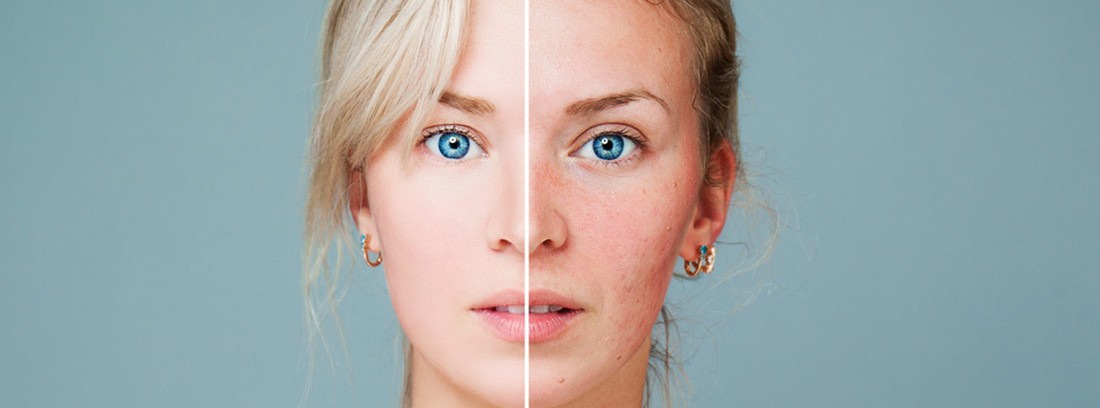Causes of rosacea skin and its treatment

Rosacea is a inflammatory skin disease, of a chronic and recurrent nature, that is, with periods of improvement that alternate with others of worsening. Although its manifestations can be very spectacular, we are facing a benign disease, but due to its aesthetic repercussions and the associated discomfort, it can cause great emotional discomfort and impact the quality of life of the patient.
How does rosacea manifest itself?
Rosacea appears on the face, affecting the central area: nose, cheeks, forehead and eyes. The classic skin manifestations of rosacea are:
- Erythema or redness of the skin
- Flushing or flushing
- Telangiectasiassmall reddish, dilated veins
- Raised injuries such as papules, pustules, nodules. When there are no such lesions, the disease is called couperose and not rosacea.
According to the type of lesions that predominate, rosacea is classified into different subtypesIt is possible for patients to go from suffering from one type of rosacea to another. It is common for patients to report a burning sensation and tightness in the skin and swelling (facial edema), with intolerance to cosmetic creams, which accentuate the symptoms of skin irritation. At eye they can affect the conjunctiva (redness) and the cornea, appearing similar symptoms such as itching or a sensation of "foreign body". The rhinophyma It is a manifestation of rosacea in which there is a thickening and deformity of the nose. It is more common in men than women.
What is its cause and how does it get worse?
The exact cause of rosacea is unknown. Genetic, infectious, immunological, environmental factors and alterations in neurovascularization, among others, have been implicated. What is known is that they exist factors that clearly make it worse or worse and can trigger injuries:
- Changes in temperature, especially the sudden changes of cold and heat.
- Alcohol and tobacco.
- Food: spicy, chocolate, spices such as mustard, some fruits such as avocado, foods rich in histamine, dairy.
- Sun exposure, worse in summer.
- Intense physical activity
- Stress, anxiety.
- Medicines.
- Cosmetic productsespecially those that have irritants like acetone or propylene glycol.
The diagnosis is clinical, that is, the lesions are characteristic and of easy identification. To differentiate it from, an important fact is that comedones (the blackheads and whiteheads typical of acne) are not observed. The medical history of the patient helps to determine the factors that worsen it, the time of evolution, flare-ups and duration, to assess the severity and plan treatment options. The one who diagnoses and treats rosacea.
Treatment to control rosacea
It should be clear that rosacea is a chronic disease and that today there is no definitive curative treatment, but injuries can be improved and the disease well controlled. Treatment is based on a series of general measures together with a specific treatment. Dermatology Specialist
(Updated at Apr 14 / 2024)